In English
|
ISBN 978-9985-58-979-3 |
Mõisa fenomen Balti kultuuriloos. Vaatenurki üle uurimisväljade Edited by Kristina Jõekalda, Linda Kaljundi, Ulrike Plath Manor houses can be considered one of the best known and most popular phenomena in Estonian cultural history – they are studied, visited, written and talked about, photographed and filmed, restored, bought and sold. The manor is one of the few elements of the Baltic German heritage that has acquired a firm place in the Estonian national cultural memory and heritage landscape. However, there seems to be reason to ask whether the public image of manors is not too one-sided. This volume is born out of the conviction that the manor is a phenomenon of key importance for the analysis of Baltic history and culture. In order to understand it better, we should look beyond the manor house and the landlord, and seek new perspectives through cooperation between different disciplines. In this book, scholars from different disciplines explore the manor as a phenomenon around which many of the main themes of the multi-ethnic history of the region are centred: the manor helps to shed light on the history of the interaction of Estonian and Baltic German cultures. Among other things, the collection opens up new perspectives on the earlier history of manors, the importance of material culture and art as a source of manor history, the role of research and restoration practices in transforming the meaning of manors, cultural images of manors at different times, and the ambivalent manorial relationship between Baltic Germans and Estonians. |
|
ISBN 978-9985-58-972-4 |
Heritage in History Education Edited by Anu Kannike, Mare Oja, Tiiu Kreegipuu, Andres Andresen The aim of this publication is to support history teachers and university teacher trainers in understanding and addressing cultural heritage issues in history teaching. Through history teaching, students learn about cultural heritage and different value systems, the changing meaning of heritage over time, the ability to relate past events to each other and to the present, and to understand the reasons for different interpretations of historical events and memory conflicts. The aim of the heritage education approach is to strengthen students' critical understanding of history and culture. The publication brings together articles that help the younger generation understand the past, reflect on the complexity of traditions, values and attitudes, and identities. |
|
ISBN 978-9985-58-971-7 |
The Spread of Orthodoxy and the Architecture of Churches in the Baltics of the 1840s–1917 Alexander Bertash Alexander Bertash’s book "The Spread of Orthodoxy and the Architecture of Churches in the Baltics of the 1840s–1917" makes a significant contribution to the understudied topic of Russian Orthodox church construction in the Baltic region during the late imperial period. Through comprehensive multi-archival research, this study not only examines the design of Orthodox churches but also provides a nuanced overview of the political and cultural colonization processes at play on the Empire's periphery. This lavishly illustrated volume presents the history of Orthodox architecture in the Baltics with unprecedented depth and detail, making it an invaluable resource for those interested in the dynamics of Russian Orthodoxy beyond the borders of Russia. |
|
ISBN 9772504661094 |
Philologia Estonica Tallinnensis 9 (2024) Edited by Luule Epner ja Piret Viires The ninth issue of Philologia Estonica Tallinnensis continues the exploration initiated in the sixth issue, published in 2021, which focused on cultural changes during the transitional period. The transition era, beginning in Estonia in the late 1980s and extending through the first decade of regained independence, brought rapid and profound societal changes. Influenced by social and economic shifts, the culture of transition was mosaic and contradictory, with uneven development across artistic genres and cultural fields. Tensions arose from the relationship with Soviet-era cultural heritage and the swift integration of contemporary Western culture. This issue examines changes in literature, theatre, and the intersection of visual arts and literature during this transformative period. In addition to Estonia, it also explores similar transitions in East Germany and Ukraine. Articles address topics such as the shift to postmodernism in Estonian theatre (Luule Epner), illness and metaphor in Madis Kõiv's dramaturgy (Piret Kruuspere), institutional changes in theatre and film (Kristiina Reidolv), Priit Pärn's children's book Tagurpidi (Mari Laaniste), depictions of post-socialist life in German and Estonian literature (Aigi Heero), and post-colonial identity in Halyna Pahutiak’s youth novel The World’s Eye (Irena Peterson). The opening article by Luule Epner and Piret Viires provides a general overview of the main features and contradictions of transitional culture. This collection offers valuable insights for anyone interested in the culture of Estonia and Eastern Europe during the transition era. |
|
|
Semiotics of Conflict. A Lotmanian Perspective Edited by Daniele Monticelli, Merit Maran ja Franciscu Sedda. The volume sets out to explicate the phenomenon of conflict in dialogue with Juri Lotman’s semiotics of culture. Through theoretical investigations and case studies, the authors in this volume contribute to the illumination of the semiotic nature of conflict through a Lotmanian lens. While Lotman didn't provide a systematic theory of conflict, his ideas on the incompatibility of codes, untranslatability, stereoscopicity, semiotic resistance between communication partners, misunderstanding as conversation in non-identical languages and tension between opposing structural poles inside a semiotic system offer a rich foundation for the understanding of cultural and social conflict. The volume also contains the first English translations of three essays written by Lotman in the early 1990s, when the collapse of the USSR provoked new hopes as well as new conflicts. The diverse nature of the perspectives developed in the studies gathered here shows that Lotman’s ideas have the theoretical scope and versatility to inform a multifaceted approach to the analysis of conflict as well as providing some much-needed reflection on our current turbulent times. |
|
|
Breakthroughs in Cultural Psychology Edited by Jaan Valsiner ja Marek Tamm Cultural psychology is a new synthetic field of knowledge within the social sciences of the 21st century. It brings together psychology – developmental and social psychology in particular – with cultural history, anthropology, ethnography, art, music, semiotics, and sociology. The scientific focus of cultural psychology is on the realm of meaningful human experiences. The volume “Breakthroughs in Cultural Psychology” edited by Jaan Valsiner and Marek Tamm features a collection of unique personal narratives from leading scientists worldwide, highlighting the development of key ideas that are advancing the field. It serves as an essential resource for scholars, practitioners, and students alike. |
|
ISSN 2504-6616 (print) |
Philologia Estonica Tallinnensis 8 (2023) The eighth issue of Philologia Estonica Tallinnensis has been published. The thematic focus of this issue is "Language and Languages. Learning and Teaching," addressing the problems that have arisen in connection with the transition to Estonian-language education. The main topics under consideration include attitudes and approaches to the transition to Estonian-language education, as well as activities, teaching materials, and learning experiences that support language acquisition. The collection comprises nine articles in Estonian and English. Language teachers and linguists from Tallinn University, the University of Tartu, and Lithuania present their research findings. |
|
ISSN: 2228-0669
|
Estonian Yearbook of Military History 11 (17), 2021 Editor: Toomas Hiio Authors: Toomas Hiio, Ants Jürman, Toivo Kikkas, Thomas Rettig, Vasilijus Safronovas, Khachatur Stepanyan, Lars Erikson Wolke Paper copy sold out Between 2019 and 2021, many Eastern European nations celebrated the centenary of their wars of independence. On this occasion, in 2019, an international annual conference on Baltic military history Independence Wars in North-Eastern Europe and Beyond was held in Tartu in cooperation with the Estonian War Museum and the Estonian Military Academy. Four articles of the newly published yearbook – on the experience of the Lithuanian Soldiers, the Swedish volunteers in Estonia in 1919, on Pavel Bermondt-Avalov and his West-Russian Volunteer Army in Latvia and on Armenian 1921 February rebellion – are based on the presentations of this conference. In addition, two articles are disserting on the activities of the field courts martials and the Soviet Cheka during Estonian War of Independence as well as on the White and Red terror in the Northeast Estonia during 1917–1919. Articles were written by Armenian, German, Lithuanian, Swedish and Estonian historians. |
|
ISSN 2504-6616 (in print) |
Philologia Estonica Tallinnensis 7 (2022) Edited by Anna Verschik Paper copy sold out The topic of the current issue is children’s and youth multilingualism. The phenomenon of multilingualism is never going to become obsolete because multilingualism is everywhere and the majority of the world population is multilingual, and new angles and approaches to the topic are constantly being developed. This time the focus is on early bi- and multilingualism in Estonia and abroad, acquisition of derivation in L1, codeswitching, second language learning and acquisition, multilingual communication in oral speech and social media and YouTube, language use and language attitudes among Estonian youth, family länguge policy, language maintenance, ethnolects and accents, comparative research on early bilingual acquisition. Some studies are experimental and some are ethnographic or combine various methods. The issue contains articles by both Estonian and foreign authors, and young aspiring scholars are represented as well. |
|
ISSN 2504-6616 (print) |
Philologia Estonica Tallinnensis 6 (2021) The sixth issue of Philologia Estonica Tallinnensis focuses on the cultural changes that took place in Estonia during the so-called transitional period. The transition era began with the collapse of the socialist system in Eastern and Central Europe at the end of the 20th century and involved fundamental changes in politics, economics, technology, culture, and everyday life. The culture of this period, or the culture of transitions, is also transitional in nature: it is a complex interweaving and collision of old socialist values, identities, perceptions, and symbols with new Western-influenced values, identities, and symbols. This issue of Philologia Estonica Tallinnensis examines these changes in the culture of transition, focusing in particular on literature, translation and publishing, and visual culture. The articles deal with the novels of Gohar Markosjan-Käsper (Aigi Heero), Estonian punk poetry (Piret Viires), the situation of translation literature in the transitional era (Triin van Doorslaer), the works of Andrus Kivirähk and Monique Roffey from an ecocritical perspective (Maris Sõrmus, Suliko Liiv), newspaper comics of the 1990s (Mari Laaniste), the first performances of Estonian performance artists in Finland (Liis Kibuspuu), and bridges and conflicts in the East-West art scene in the 1990s (Raivo Kelomees). The issue opens with a general article by Luule Epner and Piret Viires on cultural changes in the transition era. The issue could be essential reading for anyone interested in the transition era in general and developments in Estonian culture in the 1990s in particular. |
|
ISBN 978-9985-58-898-7 |
Multilingual Practices in the Baltic Countries Editor: Anna Verschik Sold out The article collection comprises nine sociolinguistic case-studies on a variety of topics such as linguistic landscapes, family language policy, language in education, language contacts, multilingual internet communication, language ideologies and practices, language maintenance and language shift. The studies address a range of significant questions. What are Russian-speaking teachers’ strategies when teaching their subjects in Estonian? What is behind the decision of Russian-speaking parents to send their children to Latvian-medium school? How some public signs in Latvia become a controversial issue? How linguistic landscapes can be used in foreign language pedagogy? What are similarities and differences in language use of two Latvian-Estonian bilinguals? What happens in Estonian-English-Japanese trilingual communication on Facebook? What does a comparison between Tallinn and Vilnius linguistic landscape tells us? Whether and how Lithuanians in the UK and Norway maintain Lithuania? Do siblings from the same Lithuanian family in Australia have a similar command of Lithuanian? |
|
ISSN 2504-6616 (print) |
Philologia Estonica Tallinnensis 5 (2020) Editors: Reili Argus ja Annika Hussar The fifth issue of Philologia Estonica Tallinnensis on the subject of language focuses on successions in language. Studies from different fields of linguistics that reveal what certain types of successions speak of languages have been grouped to this issue. As the theoretical basis of articles varying from microstudies to macro-level studies is diverse, the range of languages under observation (Estonian, Hungarian, Ukrainian, Finnish, German, Lithuanian) and international authors is also wide. The issue comprises 11 articles in Estonian and in English. The topics include the acquisition of the first language and language-learning, changes in language resulting from contacts, colour names, regulation of first name use, translating perception metaphors, vocabulary of weather phenomena and narrower language phenomena such as partitivity. A very diverse choice of examples of how successions may exist in language have been brought together in the journal – there are examples of frequency successions, references to the appearance of linguistic expressions in language, similarity between frequencies and successions which in turn point to cultural similarities, but also descriptions of how one phenomenon sets a whole chain of new phenomena in motion. |
|
ISSN 2228-0669
|
Estonian Yearbook of Military History 9 (15), 2019 Editor: Kaarel Piirimäe Is it possible to learn from military history? Is it possible to learn from the past at all? Throughout several thousand years history has been valued as magistra vitae – teacher of life. Nowadays many agree with the dictum of military historian Michael Howard: „Past wars provide the only database from which the military learn how to conduct their profession“. However, the advent of professional history writing has cast doubt on the assumption. Leopold von Ranke, the father of historism, wrote already two centuries ago that his aim was not to give guidances but merely to show what actually happened. But does history have to give direcion? Would it not suffice to give general insights about how things work in the world? In this issue military historians and professors of military history from six countries discuss the use and abuse of military history in the military profession and national defence strategies more generally. |
|
978-9985-58-876-5 |
Before Tito: The Communist Party of Yugoslavia during the Great Purge (1936–1940) Stefan Gužvica The time of the Great Purge in the Soviet Union has been one of the most controversial and under-researched periods in the history of the Communist Party of Yugoslavia (KPJ). Secrecy has surrounded it because of the executions of most leading members of the party from the interwar era, while its appeal lies in the fact that, at the end of this period in 1939, Josip Broz Tito became the party general secretary, a post he would hold until his death in 1980. Using newly-available archival sources from Moscow, Stefan Gužvica offers the first academic and systematic analysis of this crucial formative period in the history of the KPJ. He presents, in great detail, the downfall of Milan Gorkić, who led the party before Tito, as well as his closest colleagues and rivals, most of whom were swept away in the Purge, such as Ivan Gržetić, Vladimir Ćopić, and Stjepan Cvijić. Rather than focusing on Tito alone, Gužvica shows that the Comintern considered a wide array of candidates from the Yugoslav party, including Kamilo Horvatin, Ivo Marić, and Petko Miletić, before settling for Tito in early 1939. Gužvica explains the reasons of Tito's success, examines the policies and failures of his rivals, and pays particular attention to the long-term consequences of Tito's appointment, culminating in the Soviet-Yugoslav split of 1948. |
|
ISSN 2504-6624 |
Philologia Estonica Tallinnensis 4 (2019) Edited by Luule Epner, Ave Mattheus, Piret Viires This issue of Philologia Estonica Tallinnensis, "Tradition and Avant-Garde," presents seven perspectives on the diverse tensions between tradition and the avant-garde, using Estonian and other literatures as examples. However, one common thread among these articles is that they examine how new phenomena, formal ideas, or themes have or have not become part of the tradition of Estonian or other national cultures, and how tradition has evolved as a result. |
|
ISBN 978-9985-58-866-6 |
The Diametric Mind. New Insights into AI, IQ, the Self and Society The diametric model of the mind and of mental illness is based on Hans Asperger’s depiction of autism as a deficit condition where our ability to understand other people’s behaviour in terms of intention, emotion, and meaning, is concerned: what it calls mentalism. According to the model, psychosis is a state of hyper-mentalism in which intention metastasizes into paranoia, emotion into mania, and meaning into delusions of all kinds. The most important insight of the diametric model is that perceived reality is complex in the sense in which complex numbers are: comprising a real part based in the physical world of cause and effect but also an imaginary part in a mind which has free will. The book develops this model of the mind by showing how it resolves most of the paradoxes of IQ and AI, along with giving a unique insight into modern society. It then goes on to give an up-to-date account of the imprinted brain theory which provides its neuroscientific basis and argues that literacy—and fiction in particular—plays a key role. Finally, the diametric model is presented as a new paradigm for psychiatry, psychology, and the social sciences. |
|
978-9985-58-855-0 |
Theory and Practice in Driver Education The book “Theory and Practice in Driver Education” has been compiled by higher education institutions that prepare driving instructors in Estonia, Finland and Norway through the funding of Erasmus+ programme. The book is particularly intended to be used as a textbook for higher education institutions, but provides a good overview of theories in the field and best practices for all other authorities and persons engaged in driver education. Download free e-Book: Theory_and_Practice_in_Driver_Education.epub |
|
ISSN 2504-6616 |
Philologia Estonica Tallinnensis III (2018) On Language and Culture The third issue of Philologia Estonica Tallinnensis focuses on the relationships between language and culture. Many specific features of acquiring, learning and using a language stem from the fact that language has features attributable to a particular group of speakers and thus a culturally organised and self-organising system. This issue comprises articles which take a look at the associations between language and culture as the collective behaviour of a group of speakers, doing so on a rather large timescale from the viewpoint of both acquiring a language and the historical evolution of a language. The compilation includes nine articles in three languages, from an international circle of authors. The topics addressed range from acquiring a first language in various cultures, family language policy in multilingual families in Tallinn, acquiring Estonian as a second language, the development of intercultural communication competences at school, linguistic politeness in Lithuanian, Estonian and Hungarian original names, and the multilingual language scene of Tallinn to the contact phenomenon of the Estonian aspect system and Estonian language phenomena which can be classified as expressions of the other sex through word formation. |
|
|
Estonian Yearbook of Military History 7 (in English) The popular maxim holds that generals and, by extension, their armies always plan for the previous war. The wide-ranging chapters of this volume show the limits of this truism. There is much more to thinking about future war: it is a dynamic and on-going process, influenced by a myriad of political, military, social, economic and cultural shifts. The imagining of future war is an important factor and often a causal element in historical processes, whether or not it is immediately followed by war. The study of the thinking about and the planning for wars in the past not only opens a window on wider societal conceptions and preoccupations at the time but is also a basis for thinking about, and hopefully implementing, military changes in peacetime. This issue of the Estonian Yearbook of Military History includes a preface on the study of war by Martin van Creveld, and chapters by Gary Baines, Benedict von Bremen, Tobias J. Burgers, General Michael H. Clemmesen, Oliver B. Hemmerle, Robert A. Jacobs, Michael Jung, Iain MacInnes, Kaarel Piirimäe, Alon Posner and Blaž Torkar. The articles discuss a wide range of subjects: Mediaval strategy and tactics, concepts and imaginations of decisive battles and total wars in the 19th and 20th centuries, general staffs and war plans before the First World War and before the Second World War, visions of a conventional and nuclear Third World War during the Cold War, historical analogies in thinking and speaking about war, and new technologies and present trends in the development of warfare. The editor of the issue is Kaarel Piirimäe, the editor in chief of the yearbook is Toomas Hiio. |
|
ISBN 978-9985-58-828-4 |
Between Self and Societies: Creating Psychology in a New Key Between Self and Societies: Creating Psychology in a New Key contains a collection of unpublished texts by Dr. Jaan Valsiner, an innovative researcher in the field of cultural psychology. The papers included in this book enable the reader to trace the unfolding of Valsiner’s central ideas and are organized into six thematic chapters, according to the main focus of the texts (I Trajectories of psychology in societal context, II How to study qualitative developmental phenomena?, III Focus of cultural psychology: culture as a process within and between persons, IV Semiotic processes: how meanings are made?, V Cultural-semiotic regulation in societal and interpersonal processes,VI Cultural-semiotic self-regulation). The articles are accompanied by retrospective comments and two interviews that uncover Valsiner’s unique personal perspective. Jaan Valsiner (born in 1951 in Tallinn, Estonia) is one of the founders of the re-birth of cultural psychology at the end of the 20th century. Among many varieties of cultural psychology, which all focus on the meaningfulness and cultural nature of psychological phenomena, he has inititated and is developing a cultural psychology of semiotic dynamics, providing thorough theoretical innovations to psychological science. Since 2013 Jaan Valsiner is the Niels Bohr Professor of Cultural Psychology at Aalborg University in Denmark, where he leads Europe’s first Research Centre on Cultural Psychology. Among his numerous works Culture and the Development of Children's action (1987, 1997) The Guided Mind, The Social Mind(2000), Culture in Minds and Societies (2007), A Guided Science (2012), An Invitation to Cultural Psychology (2014) could be named. In spring 2017 he was honoured with the Hans Kilian Award. |
|
ISSN 2504-6616 |
Philologia Estonica Tallinnensis I (2016) This year's topic of Philologia Estonica Tallinnensis, a collection by international authors, is "Linguistic, social and cognitive aspects of language contact and multilingualism". No language exists in isolation without contacts with other languages; whether it is a peripheral fact for the researcher, or, on the contrary, the main object of study, is another matter. Most articles included in this volume are focused on language contacts having Estonian language as one of the parties. The article by Lea Meriläinen, Helka Riionheimo, Päivi Kuusi and Hanna Lantto provides an overview of the theories of loan translations. Jim Hlavac approaches loan translations in Macedonian-English bilingual speech from the angle of contact linguistics. Virve Vihman's and Jim Hlavac's articles test theoretical models known in contact linguistics and state that in the process of language contacts, innovations which do not follow the grammar of either language are born. Anette Ross covers the dialect of the Roma living in Estonia in the context of other Roma language forms. Kristiina Praakli's article which analyses the social group of Estonians living in Finland from the viewpoint of pragmatics, and Helin Kase's study on the impact of English in Estonian fashion blogs are centered on multilingual virtual communication. Elīna Joenurma examines Estonian-Latvian bilingual speech, following the code-copying model, and focuses on the impact in both directions. Daria Bahtina-Jantsikene and Ad Backus treat Estonian-Russian receptive bilingualism, using experimental methodology. |
|
ISBN 978-9985-58-819-2 |
Cultural Patterns and Life Stories The articles collected in this book were initially presented at a conference dedicated to Aili Aarelaid-Tart's memory on August 27, 2014, in Tallinn. Aili Aarelaid-Tart (1947-2014) was a well-known Estonian cultural researcher and public figure. All of the authors of that collection have collaborated with Aili Aarelaid-Tart in her research at different times and on different themes: they shared her interest in biographical research (Kõresaar, Zdravomyslova, Temkina, Assmuth and Siim), in exiles and life stories (Bela, Bennich-Björkman, Kõll and Skultans), in research on cultural trauma (Rahi-Tamm, Roos and Skultans), and in questions of cultural patterns and values (Halas, Norkus, Gronow). |
|
ISBN 978-9985-58-8093 |
Juri Lotmani autoportreed. Автопортреты Ю. М. Лотмана. Juri Lotman’s 16,90 € Out of stock A trilingual and colourful book of self-portraits is a valuable addition to the legacy of this great scientist. Yuri Lotman was artistically talented and mastered a brilliant sketching technique; he knew how to convey the essence of things, animals, people with just a few lines. Often he drew himself, and this part of his artistic heritage is especially interesting culturally and in terms of his biography as a scientist: self-portrait is the expression of inner and outer at the same time, and reveals how the author views himself, what are the most intrinsic features of his character and behaviour. Yuri Lotman drew self-portraits often at random, on the edges of his research work, bibliographical sheets, calendar sheets etc. His self-portraits have been drawn in a humorous light, often using self-irony and expressing the author’s sense of humour. This makes the images especially charming. Illustrations differ by composition: there are quick portraits on the edges of texts, some have been outlined into the text, often accompanied by verbal comments, there are image series, stories within the images. Each drawing is accompanied by a short comment that contains necessary information for understanding the image: size, time of creation, location of the archival document, explanations on the content and the circumstances of its creation, if necessary. Comments have been written by Tatyana Kuzovkina. She has also written an epilogue for the drawings in cooperation with S. M. Daniel. As an important addition to Yuri Lotman’s legacy, primarily his biography, the book is trilingual: all comments and the epilogue are in Estonian, Russian and English. |
|
ISBN 978-9985-58-807-9 |
Urban Semiotics: the City as a Cultural-Historical Phenomen Sold out This collection of essays presents the materials of the Third Annual Juri Lotman Days at Tallinn University in Estonia (3–5 June 2011). The participants discussed the semiotics of urban space from the perspective of the Tartu-Moscow School in comparison with contemporary approaches. This book consists of four sections. The articles in the first section discuss how “urban texts” function in modern and contemporary Baltic cultures. The papers in the second section focus on the semiotics of place in nineteenth- and twentieth-century Russian and Soviet culture from the perspective of linguistic poetics, cultural semiotics, and new materiality. The last two sections are devoted to the visual perceptions of the cityscape and their ideological interpretations as exemplified by Ukrainian, Estonian, Korean, Chinese, and North American illustrations.
|
|
ISBN 978-9985-58-806-2 |
I luoghi nostri: Dante’s Natural and Cultural Spaces This article collection contains a selection of the latest work of internationally renowned Dante-researchers. The collection is centred, above all, on room-related problems in different aspects (late medieval cosmology, Dante’s poetics of room, semiotics and phenomenology, Judaic, Islamic, Christian, Pagan and folk aspects and motives in the representation of room) as well as many other topical issues in contemporary Dantology (Dante’s dialogue with the epic of antiquity, Dante’s intellectual development). Eleven articles and essays include approaches to above issues within a w |
|
296 pages |
Inventing the National Defence: Eastern Europe Before the Fall of the Berlin Wall and Accession to NATO The fourth issue of The Estonian Yearbook of Military History (in English) published in collaboration with the Estonian War Museum - General Laidoner Museum and Tallinn University Press, is dedicated to the re-establishment of national defence in the Baltic states and in other East European states after the collapse of the USSR. The yearbook contains articles written by historians and military men from the USA, Latvia, Germany and Estonia on the re-establishment or reshaping of national defence in Eastern Germany, Czechoslovakia, Latvia, Poland and Estonia between 1990 and 2004. The yearbook includes articles by Toe Nõmme on weaponry purchases in Estonia during the 1990s; the military plans of General Ants Laaneots at the beginning of World War II; the memorial research by Hain Rebane on the failure in the conception of national defence of 1993 by the Government; as well as the so-called Israeli arms deal in 1993. Trivimi Velliste, the ex-Foreign Minister of Estonia and ex-Ambassador to the UN, wrote the introduction. |
|
ISBN 9789-985-58-774-4 |
Playgrounds And Battlefields: Critical Perspectives of Social Engagement Edited by Francisco Martínez ja Klemen Slabina Authors: Francisco Martínez, Klemen Slabina, Mihhail Lotman, Siobhan Kattago, Kevin Ryan, Tom Frost, Flo Kasearu, Marcos Farias-Ferreira, Jaanika Puusalu, Dita Bezdíčková, Emeli Theander, Patrick Laviolette, Alastair Bonnett, Oleg Pachenkov and Lilia Voronkova, Anne Vatén, Helena Holgersson, Patricia García Espín and Manuel García Fernández, Benjamin Noys, Kristina Norman, Madli Maruste, Pille Runnel and Ehti Järv, Alessandro Testa, Sean Homer, Tarmo Jüristo Out of stock This book explores whether the metaphors of ‘playground’ and ‘battlefield’ might be analytically meaningful terms for understanding contemporary society. The duality of playgrounds and battlefields is presented as a space of continuous becoming, related to the recreation, domination and experience of a place, as well as to corresponding practices of excess, interaction and enjoyment. We believe that a discussion about engagement and responsibility in a modern social setting is possible only through new concepts that avoid binary formulations. Playgrounds and battlefields are thus used as a trigger enabling a fresh approach to a contemporaneity that is highly influenced by the way in which societies deal with their past and future. In this sense, the ‘Playgrounds and Battlefields’ volume is a thematic one, mapping the field and offering grammar of possibility. |
|
ISBN 9789-985-58-768-3 |
The Unpredictable Workings of Culture The Unpredictable Workings of Culture belongs to Juri Lotman’s late period. Previously published in Italian and Russian, this work is appearing now for the first time in English translation. The book’s general thematics link it to Lotman’s two other final monographs, Universe of the Mind and Culture and Explosion, already well-known to Anglophone readers. All three of these books are dedicated to questions that occupied this scholar and thinker during the last years of his life: first, the need for a common approach to natural, social, and spiritual phenomena; second, the problem of evolutionary and explosive processes in the history of culture; and, third, the question, closely linked to the previous two, of art as a workshop of unpredictability. Lotman’s friends and colleagues—brilliant representatives of the Tartu-Moscow Semiotic School—point out the special style and tone of this work: “While I was reading the book, I had the sensation I was speaking with Lotman. I could hear his intonations; I could see his face turned toward me. I used to have the same feeling when I listened to his lectures. It seemed that he wasn’t speaking to us all at the same time but rather to each one of us individually” (Boris Uspensky). “This book is an outstanding example of Lotman’s style. Here Lotman expresses his most cherished thoughts with a clarity and in a form that make them accessible to a wide audience, offering rare and fascinating examples to illustrate his points” (Vyacheslav Ivanov). |
|
ISBN 978-9985-58-753-9 |
Working with Feminism: Curating and Exhibitions in Eastern Europe This edited collection, bringing together art historians and curators working both in the ‘East’ and the ‘West’ of Europe, is a result of a growing interest in the theorisation and historical analysis of feminist curating as a distinct practice with its own transnational history and politics. |
|
ISBN 978-9985-58-734-8 |
Politics, Illusions, Fallacies "Politics, Illusions, Fallacies" is an insightful vision of the dilemmas of the Western modern state and democratic politics facing universalism, globalization and the non-West way of thinking and life. It is a well structured contribution that deserves the needs of a wide international debate: the paper actually provides good grounds for a comprehensive analysis of the most sensitive questions elaborated by the author that will attract the critical attention of the academic world and the readers in general. Stefano Bianchini, |
|
ISBN 9789985587065 |
A Brief History of Sexuality in Premodern Japan Out of stock “A Brief History of Sexuality in Pre-modern Japan” addresses sexuality in pre-modern Japanese society as revealed by court literature, picture scrolls and Buddhist art. Based on the balance between power and productivity, which derived from a political system utilizing marriage politics, pre-modern sexuality transcended the dualism of homo/heterosexuality. |
|
|
Connecting Paradigms of Motor Behaviour to Sport and Physical Education “Connecting Paradigms of Motor Behaviour to Sport and Physical Education” presents recent articles that examine theoretical and empirical research on the learning and teaching of motor skills. The development of the book is based on the effect of synergism – a phenomenon whereby the cooperative interaction of multiple psychological, pedagogical, and biological ideas, drawn from the systemic model, produces an outcome that is superior to that which could be expected from knowledge derived from the independent contributions of these disciplines. |
|
|
Baltic Suicide Paradox Suicide is the most extreme form of self-destructive behaviour. The mystery of suicide has prompted mankind to search for the causes of self-inflicted mortality in all ages and societies. During the last 50 years, most of the research into suicide has been conducted in countries with established democracies and market economies, in which no significant societal changes have taken place. By contrast, this book provides the reader with insights into the sociological and psychological aspects of suicide in the Baltic countries –Estonia, Latvia and Lithuania, which have experienced dramatic social upheaval in the last 30 years. |


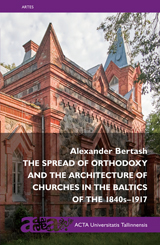

 ISBN 978-9985-58-969-4
ISBN 978-9985-58-969-4  ISBN 978-9985-58-962-5
ISBN 978-9985-58-962-5
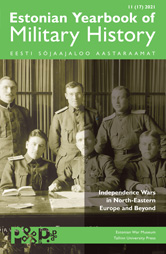


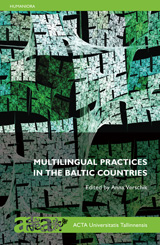
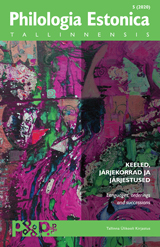

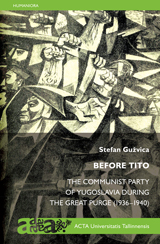
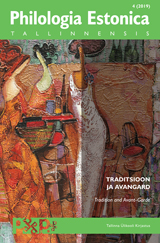

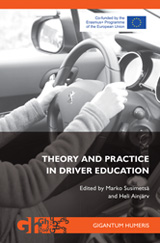

 ISSN 2228-0669
ISSN 2228-0669



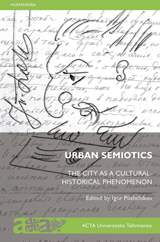

.jpg)






